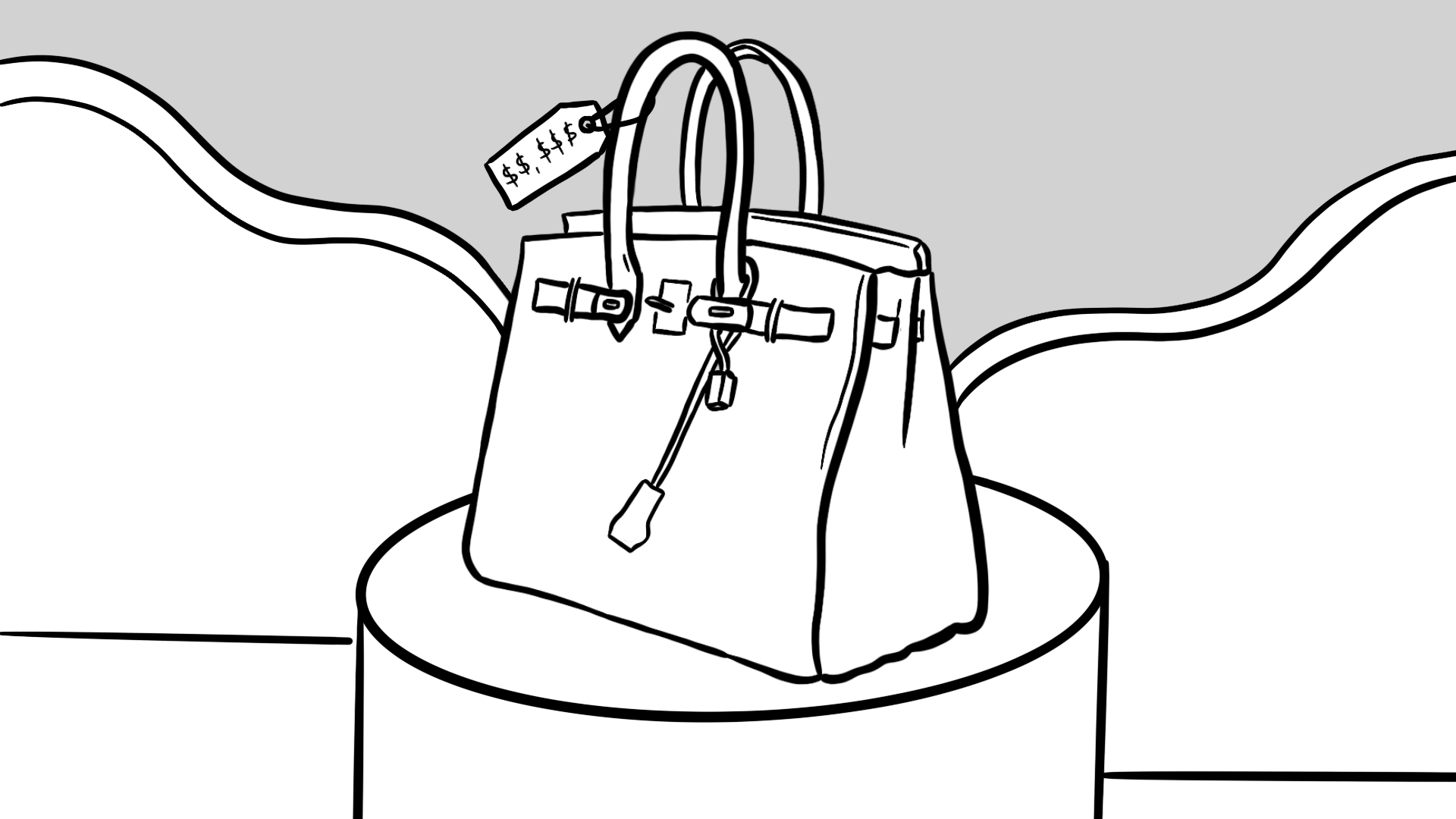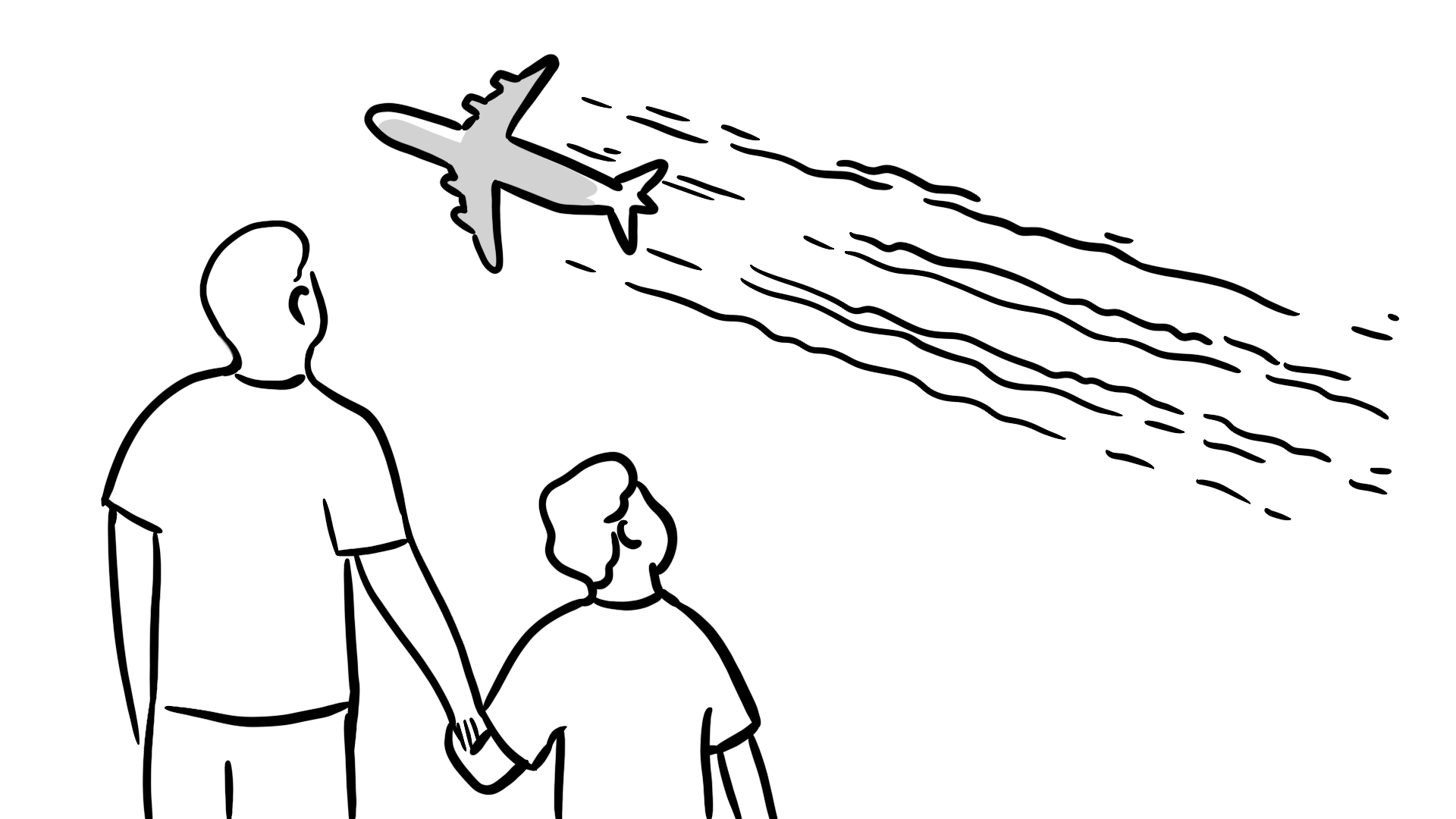
Scarcity
Stabbings, state secrets, whores masquerading as Supreme Court justices — it’s been an especially depressing week in the news. So I’d rather focus on scarves. Specifically, Hermès, the iconic luxury brand. With $12 billion in annual revenue, Hermès now has a larger market capitalization than … Nike, which boasts $47 billion in annual revenue. I see this as a slow, yet tectonic, shift in consumer values (cue dramatic music) as awareness cedes ground to artisanship.

Awareness, via social platforms, has created a generation of empty-calorie brands — Kylie Cosmetics, Dollar Shave Club, Andrew Tate — built on sand. Over the past five years, the three biggest consumer packaged goods companies (P&G, Nestlé, and Unilever) whose competence is (building) awareness, have averaged annual stock gains of 9%, vs. 15% for the three largest luxury firms (LVMH, Kering, and Estée Lauder).
The decline of linear TV is a function of cable TV losing its oligopoly on awareness and awareness beginning to lose value as brands famous for being famous are less enduring. This trend highlights what has got to be a first-ballot-hall-of-fame strategic head-up-your-ass decision: Do away with one of the great artisanal brands of the 20th century, HBO. But that’s not what this post is about.
Key to artisanship is there being few artisans. Specifically, the existence of scarcity. Or, as is often the case, the illusion of scarcity. The strongest brands in the world — MIT, Apple, Hermès, the U.S. — are built on the artificial choking of supply via rejectionist admissions, pricing strategies, production, and visas.
Thirteen years ago I started a business intelligence firm that advised luxury (then CPG) brands. It was a successful company, predicated on a simple premise: Luxury brands would trade at higher multiples of revenue due to increasing income inequality and their ability to manufacture scarcity. That was the sermon I preached to every executive we met. We sold the company in 2017 for 8x revenue. Mirroring our client base, we were disciplined about pricing and said no to a lot of potential clients’ procurement departments (BTW, awful job). My first consulting firm, Prophet, had said yes to every client with a checkbook, and it sold for 2.8x revenue. It was the right decision at the time, as I didn’t have the capital to utter the sexiest word in the English language: no.
Want vs. Need
The richest man in the world doesn’t make cars, rockets, or enterprise software — he makes handbags. Bernard Arnault, the CEO of LVMH, is now worth more than Warren Buffett and Mark Zuckerberg combined. He’s made his fortune not selling things people need, but things they want. LVMH controls the most prestigious luxury brands in the world, from Tiffany & Co. to Loro Piana to Louis Vuitton.
When you assemble artisans and create scarcity that results in a supply/demand imbalance, you generate a cash volcano that you can cap the same way you do an oil well — and turn on/off as needed. Businesses are either supply-constrained (e.g., rare earth minerals, 1945 Château Mouton wine, etc.) or demand-constrained (pretty much everything else). The companies that trade at the greatest multiples are those that are artificially supply-constrained, where the supply/demand imbalance puts a dial on the spigot the managers control. Imagine the decision to have more revenue is just a function of when you’d like more revenue (see above: Hermès).
I wrote about scarcity six years ago. How to create it, how to sell it … why it’s so important. Today, scarcity is more important — and scarce — than ever. In sum, this post still resonates.
[The following was originally published on March 3, 2017.]
Scarcity is key to irrational prices. Beachfront property is scarce and, regardless of the economic cycle, always in demand. You can also manufacture scarcity with similar results (crazy-town prices). Spoiler alert: Hermès could produce more Birkin bags and yet decides not to. The choking of supply adds heft to the narrative that this is a special bag, and it adds credibility to the urgency — you may be shit out of luck next week if you don’t plunk down $14,000 now.
Snap Inc. stock began trading yesterday, and bankers did a masterful job of manufacturing scarcity. The triple threat of social/video/millennial is uber-fashionable, and the underwriters ensured that, after placing the bulk of shares with institutions, which implicitly commit to holding for a long(ish) time, the bankers let only 14% of the shares float (be available for trade).
So, even if a Birkin bag or Snap shares are not intrinsically worth $14,000 or $25/share, if scarcity supports the price then God bless them, no? No. Hermès can maintain scarcity. However, over the next 24 months, seven times the number of Snap shares could hit the market. The network’s artisanship/specialness is also about to become less scarce as Instagram Stories continues counterfeiting the “Snap bag.” I believe, in 2018, Snap shareholders will discover they don’t own a Birkin, not even a Kors or a Kate Spade, but an Esprit Black Brown Round Barrel Bag Purse Shoulder Small Hipster.
Object Orientation
We’ve been reading words for several hundred years, listening to words for thousands, and learning from images for millions. We, as a species, are great with images. We can interpret/absorb an image 50 times faster than words, as we’ve had a lot more practice with visuals. Just as music is cemented into our being in our late teens, the images of our early childhood become fixed into our gray matter.
When I was 7 we lived in a house near the beach in Laguna Niguel. My dad would come home early (he was a salesman), and we’d go bodysurfing and see seals and porpoises just offshore. When there was a storm, we’d go to Newport Beach. From the end of the pier we’d look several hundred feet out and alert each other when millions of gallons, barreling toward shore, morphed into a blue-gray hemi cylinder 8, maybe 10 feet high and wait for the pier to vibrate, even shake, as the rising sea floor thrust the cylinder up and the wave crashed down on the water.
On one of four consecutive nights, beginning on the full and new moons in spring, my mom would wake me at midnight, and, armed with flashlights, we’d go down to the beach and watch what looked like hot slices of metal dancing in the shallow surf. The grunion were running.
They weren’t all images from the title sequence of The O.C. I remember, on TV, a skinny guy wearing a ski mask on a hotel balcony interrupting awe-inspiring performances from Mark Spitz and Olga Korbut. The only reason it stuck is every time this guy came on screen, my parents stood in front of the TV, visibly uncomfortable.
When my father was going on a business trip, my mom and I would go with him to Orange County Airport. More than an airport, it felt like a restaurant where people pulled up, in the back, in commercial aircraft. There was a bar with a wraparound balcony on the second floor that you could access via stairs from the street. No security. My dad would take me out on the balcony and cover my ears as aircraft engines screamed in anticipation of the pilot releasing the brakes and beginning the 5,700-foot transformation from beached seal to soaring eagle.
He taught me the difference between a 727 and a DC-9 (three jets vs. two), and between the DC-10 and the L10-11 (third jet is part of the fuselage vs. finding residence halfway up the tail). The backyard of this restaurant was dominated by two brands, Air California and Pacific Southwest Airlines. Pacific planes had a smile painted on the nose, grinning at us through the big windows.

My parents were living the American Dream. Two immigrants with an 8th-grade education, they applied hard work and talent to the greatest force of good in history, the U.S. economy. We lived close to the beach. But they (mostly my dad) fucked up, and soon we were living in two houses, neither near the beach. After the divorce, my dad would pick me up after work every other Friday in his Gran Torino, from our 800-square-foot apartment in Encino. I had to wait outside, sometimes for an hour, far from our apartment, because my mom didn’t want to risk seeing my dad, or even his car, as she hated him. I became skilled at identifying cars, from a distance, by the shape and luminosity of their headlights. AMC Pacers were easiest.
Anytime I hear sound in the air, I still look up, and, most of the time, I can identify the plane and airline. Last weekend, in South Beach, my friends pretended to be impressed with my ability to distinguish the A-380 headed to Munich (Lufthansa) from the double-decker Airbus flying to Paris (Air France). Gazing upward and cataloging air traffic is an instinct for me — look up, identify an object, and think of when we were a family and lived near the beach.
Life is so rich,

P.S. I’ll be back on Monday with a fresh look at the Markets on the Prof G Pod.
P.P.S. Watch my five-minute lecture on scarcity here. What. A. Thrill.


Good call on snap!
Boeing and grounded lost to Airbus, LVMH, I get a sense europe, or the much discounted business suitability of france, is stronger than consensus five or definitely 10 years ago.
not just expanding rich population buying ferrari, the P911 ipo, europe built yachts, but asml, zegna ipo, expanding global middle class affording loreal sephora cosmetics, British Aeronautics and other european defense companies after ukraine, and maybe a positive EU interest rate etc etc seems to bode well
A bit of an unnecessary ramble this time. Disappointing.
case in point – look at the Art world. For example, an artist’s work may be ‘worth’ little while she/he is alive and able to produce more. Then, as soon as the artist dies, the supply becomes finite, i.e. scarcity. That’s when art galleries may come sweeping down like vultures, trying to secure the estate, selectively marketing to their clientele and strategically driving up prices. So, if you’re buying art for value creation, it would seem logical to buy from living artists, no?
Come back and stay at the Montage. Your kids and wife would love the visit. This Spring is exceptionally beautiful. We must have crossed paths or at least the staircase at John Wayne, years ago. I look forward to you witty emails.
Testing
Great article
Imagine, rich educated people who got that way by teaching other rich, becoming ‘educated’ MBA students. They are taught how to manipulate poorer, less educated people into buying garbage they do not need, like expensive handbags, in MBA classes. Of course they will blame others for effects on society, esp. the OTHER political party or ideology. Maybe a story about how ‘poor’ they were will wash off some of the hypocrisy. Likely parents of their generation would be different if subject to the consumer manipulation being taught now.
don’t think Bernard A has an mba or what the american political parties have to do with Japanese and Chinese luxury consumption
So Bernard Arnault thrives on fleecing the rich – good for him. I recommend finding a really good tailor and ditch the brands. Style and originality can’t be bought. Suckers.
Luxury brands don’t fleece the rich. They give people with means the opportunity to buy products with meaning.
Just like a tailor, you can find a really good mechanic and build your own car. But most luxury buyers don’t want to drive something as attention-seeking or conspicuous as a handmade car. Surprisingly few wrap their Benz or Maybach or Aston Martin to be more ostentatious or unique. They are willing to pay a premium to communicate something to those few who appreciate products with the same scarcity and value. They aren’t buying style and originality, though both very easily can be bought, particularly by those with the most money to do it.
A beautiful piece of writing, Scott. Thank you for sharing.
Hello Prof G! (Aka The Dawg!)
I would love to reach out with a question via email. It’s a question where fan mail meets new dad/projected retirement. Anywho, I respect all your thoughtfulness & would love your feedback.
-Eddie
I love everything about Scott Galloway, mostly his humanity, and his high standard of ethics and decency.. We need more people like him.
I also enjoy his Pivot Podcast..with Kara Swisher, his humour and good nature, and the fact that he is gracious at all times.
I wonder what Thorstein Veblen or Upton Sinclair would think about all this neoliberal sludge.
I wonder what Veblen or Sinclair would think of you.
great working conditions in the euro left’s luxury Jungles including LV texas, who knows about veblen but veblen goods = portfolio goods
I’m not a watch guy, but what people pay for Rolex watches is fucking insane. And I hear there is a year wait. I’m happy I’m not a watch guy. Or maybe I should be one? Hope you are well Prof G and own a lot of Rolexes.
Its not about being a watch guy; its about being a ‘display of luxury’ guy. There are better watches than Rolex and better bags than Hermes, but both have created a position around their brands that secures them high prices for objects far above their true value. Whether we agree with it or not is not really the point of the story. It’s how brands can feed human desire for things when they know other humans cannot get them.
Scarcity? Luxury. Inequality. People with money have it to spend. Too many people can’t even afford dinner, much less Hermes.
Is there a point here, or just stating things?
Empty calorie brands! So brilliantly apt!
Re: “He taught me the difference between a 727 and a DC-9 (three jets vs. two), and between the DC-10 and the L10-11 (third jet is part of the fuselage vs. finding residence halfway up the tail).” Do believe first analysis (# of jets) is correct, but in the second (location of jets) the difference is reversed. Seems we’re both on the same Great-SoCal-Memories team — I was lucky to visit L.A. in 1963 at age 9, and saw the Angels play the Twins at Dodger Stadium at Chavez Ravine. That 60 year-old memory is stronger than what I watched on Netflix last night.
Another luxury brand – The Beatles; a quality product, and scarcity, the result of only seven years recording and two deaths.
Don’t be the best at what you do. Be the only one who does what you do. Create your own scarcity.
Sometimes the greatest value a parent can have is to be scarce…you might just become richer (as a human being) for it,
I’ve been thinking the same thought. Nearly impossible for me to emotionally execute, but a concept that begs consideration in the pursuit of balance.
I was about to write a scathing response to the suggestion that luxury mall-corp Hermes somehow represents a great return to artisanship and how out-of-touch/elitist some of your takes have been recently compared to your “comity of man” lament and a kind of loss of what the American social contract is all about.
…And then I read the bottom bit and remembered that you can be a super relatable everyman. Some of what’s so refreshing and sometimes infuriating about your takes are the implicit contradictions between your WWII “we’re all in this together” democratic mantra, the sarcastic but brutally honest quips on absurdities in the news and your unwavering trust in the value of corporations and capitalism. You’re a fascinating guy, Scott. Thanks for the content…even if it was lifted from your Algebra of Happiness book as was suggested elsewhere in comments 🙂
Why would anyone do what they do? The main driving force behind every decision-making process is very little known and even less understood. It’s called Hedonic Tone.
Thanks for sharing this. Very interesting.
I also recommend the book Facinate: Your 7 Triggers to Persuasion and Captivation by Sally Hogshead.
There is also “Intelligent” scarcity, not just hard goods. Warren Buffet charges $250,000 an hour for lunch with him and there is a line a mile long to pay, even during recession.
Ivan should be “can”, and the last word, “memories” was cut.
Your comments about Scarcity are so on target. Funny how the public Ivan be fooled. I just hope the farming community doesn’t read your article. Sorry about the family. Glad that you have some good. ☘️
You were lucky in your choice of parents! They were the foundation for your curiosity and ability to think outside the box. I hope you are kind to them.
Kind of a lazy post today Scott. The last seven or so paragraphs were lifted almost verbatim from your Algebra of Happiness book.
I think it’s the other way around. The post is old, from 2017 and he used his posts to create the Algebra of Happiness
Great message today. After spending 30+ years in Procurement, especially noted your comment ” clients’ procurement departments (BTW, awful job). “, Can you elaborate on the awfulness. Cheers!
Scarcity or supply chain issues. Sooner or later those bubbles pop. Look at the prices for new cars. Dealers don’t have the cars. Then why are the stocks of mfgs not caving. Could the Scarcity be false?
Scott, based upon your scarcity premise, I would like to suggest that auto manufacturers as an industry are trying to do this right now. When dealerships have very little inventory that is prompting so many car buyers to order their next vehicle it has to help financially when you can schedule manufacturing and the related necessary labor/parts. Add to that no carrying cost of inventory. COVID was the perfect opportunity to “train” the buyer to order exactly what they want and then wait a few months for delivery. This will most likely continue until one of the big manufacturers decides they can grab market share by going back to offering same day delivery of a vehicle that is almost what they would have ordered. Great article.
Agreed
Does the “managed scarcity” approach also apply to gold and diamonds? I bet there’s tons of that shit stored away being parcelled out in dribs and drabs to maintain prices
I was thinking the same thing and Cobolt, it’s mined for a dollar a day and sold for 10,000x, it’s manufactured scarcity.
I chuckled at your “scarcity” message. It’s straight out of Econ 101, dressed up in new clothing, just as “supply side” economics was nothing more than Say’s Law with different wording. The whole idea of brands is to create a monopoly. I don’t buy jeans, I buy Wranglers. Rich women (on their own or via their sugar daddies) don’t buy handbags, they buy Birkins.
A monopolist constrains supply to raise prices. Kudos for restating the obvious, but I’m with Ecclesiases on this, specifically 1:9, which itself has been restated by thousands of people, as if it’s new. And who knows where he got it from?